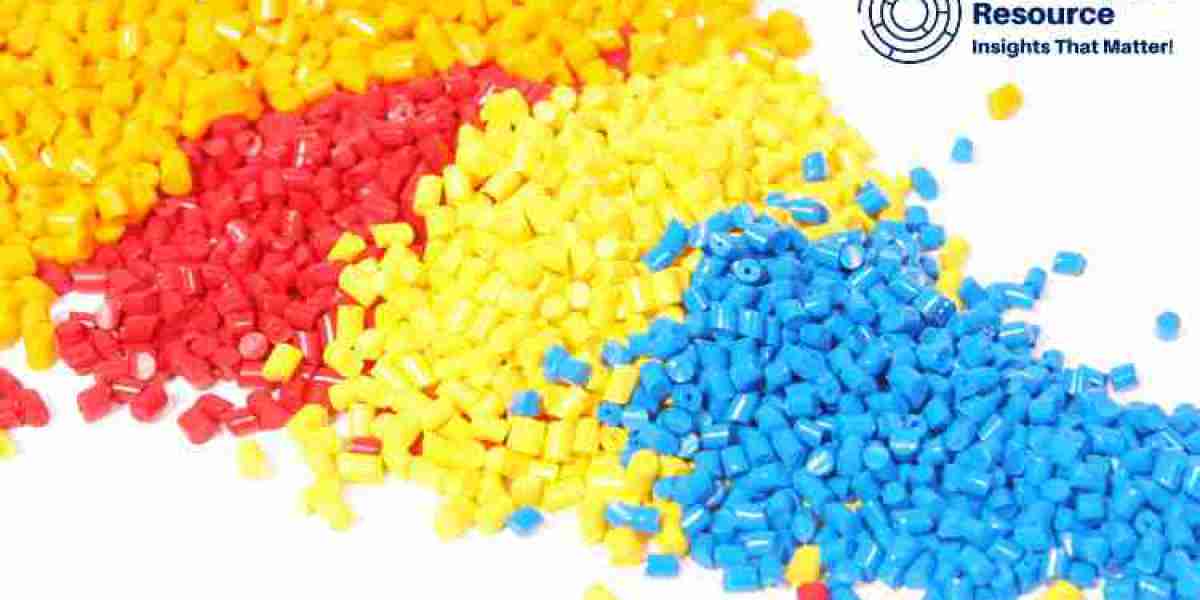Masterbatch is a concentrated mixture of pigments and additives encapsulated during a heat process into a carrier resin, which is then cooled and cut into a granular shape. It is used in the plastics industry to color raw polymer materials or to impart other properties to plastics. The masterbatch production process is a critical aspect of the plastics industry, enabling manufacturers to produce plastic products with consistent color and performance attributes.
Masterbatch is available in various forms, including solid, liquid, and powder. The solid form, which is the most common, is easier to handle and less messy than the other forms. The production of masterbatch involves several steps, each of which plays a crucial role in ensuring the quality and consistency of the final product. This report provides an overview of the masterbatch production process, the associated manufacturing steps, raw material costs, and the latest news in the industry.
Request For Sample: https://www.procurementresource.com/production-cost-report-store/masterbatch/request-sample
Manufacturing Report and Process
The masterbatch production process can be divided into several key steps:
1. Selection of Raw Materials
The first step in the production of masterbatch is the selection of raw materials. The primary raw materials used in masterbatch production are pigments, additives, and carrier resins. Pigments provide the desired color, additives impart specific properties such as UV resistance or flame retardancy, and carrier resins act as the medium that encapsulates the pigments and additives.
2. Pre-mixing
Once the raw materials are selected, they are pre-mixed to ensure even distribution. This is typically done using a high-speed mixer, which helps to blend the pigments, additives, and carrier resins uniformly. Pre-mixing is crucial for achieving consistent color and performance in the final masterbatch.
3. Extrusion
The pre-mixed materials are then fed into an extruder, where they are melted and further mixed. The extruder is a machine that uses heat and pressure to melt the carrier resin and disperse the pigments and additives evenly throughout the mixture. The extrusion process ensures that the masterbatch has a uniform composition.
4. Cooling and Pelletizing
After extrusion, the molten masterbatch is cooled and solidified. This is typically done using a water bath or air cooling system. Once cooled, the solidified masterbatch is cut into small granules or pellets using a pelletizer. These pellets are the final form of the masterbatch and can be easily handled and incorporated into plastic manufacturing processes.
5. Quality Control
Quality control is an essential part of the masterbatch production process. Samples of the masterbatch are taken at various stages of production and tested for color consistency, pigment dispersion, and other performance attributes. Any deviations from the desired specifications are addressed immediately to ensure the final product meets the required standards.
6. Packaging and Storage
Once the masterbatch has passed quality control, it is packaged and stored. Packaging is done in a way that protects the masterbatch from moisture, contamination, and other environmental factors that could affect its quality. The packaged masterbatch is then stored in a controlled environment until it is ready for shipment to customers.
Raw Material Costs
The cost of raw materials is a significant factor in the production of masterbatch. The primary raw materials used in masterbatch production are pigments, additives, and carrier resins. Each of these materials has its cost considerations:
1. Pigments
Pigments are one of the most expensive components of masterbatch. The cost of pigments can vary widely depending on the type, color, and quality. For example, organic pigments are generally more expensive than inorganic pigments due to their superior color properties and environmental benefits.
2. Additives
Additives are used to impart specific properties to the masterbatch, such as UV resistance, flame retardancy, or anti-static properties. The cost of additives depends on the type and quantity required. High-performance additives, such as those used for medical or automotive applications, are typically more expensive than standard additives.
3. Carrier Resins
Carrier resins are the base material that encapsulates the pigments and additives. The cost of carrier resins can vary depending on the type of resin used. Common carrier resins include polyethylene (PE), polypropylene (PP), and polystyrene (PS). The price of these resins is influenced by factors such as crude oil prices, supply and demand dynamics, and manufacturing costs.
4. Energy and Labor
In addition to the cost of raw materials, energy and labor are significant contributors to the overall cost of masterbatch production. The extrusion process, in particular, is energy-intensive, and fluctuations in energy prices can impact production costs. Labor costs, including wages and benefits for production workers, also play a role in determining the final cost of masterbatch.
Latest News
The masterbatch industry is continually evolving, with new developments and trends shaping the market. Some of the latest news and trends in the masterbatch industry include:
1. Sustainability Initiatives
There is a growing emphasis on sustainability in the masterbatch industry. Manufacturers are increasingly adopting eco-friendly practices and developing masterbatches that use recycled materials or bio-based resins. This shift towards sustainability is driven by consumer demand for environmentally responsible products and regulatory pressures to reduce the environmental impact of plastics.
2. Technological Advancements
Advancements in technology are driving innovation in the masterbatch industry. New extrusion technologies, improved pigment dispersion techniques, and advanced quality control systems are enabling manufacturers to produce higher-quality masterbatches with greater efficiency. These technological advancements are helping to meet the increasing demand for customized and high-performance masterbatches.
3. Market Expansion
The global masterbatch market is experiencing significant growth, driven by increasing demand from end-use industries such as packaging, automotive, and construction. Emerging markets, particularly in Asia-Pacific and Latin America, are witnessing rapid industrialization and urbanization, leading to increased demand for plastic products and, consequently, masterbatch.
4. Collaborations and Acquisitions
Collaborations and acquisitions are becoming common strategies for companies in the masterbatch industry. By partnering with or acquiring other companies, masterbatch manufacturers can expand their product portfolios, enter new markets, and enhance their technological capabilities. Recent examples include mergers between major players in the industry and strategic alliances with raw material suppliers.
5. Regulatory Developments
Regulatory developments are also influencing the masterbatch industry. Governments and regulatory bodies worldwide are implementing stricter regulations on the use of certain chemicals and additives in plastics. Compliance with these regulations requires manufacturers to develop new formulations and adapt their production processes, which can impact production costs and timelines.
In conclusion, the masterbatch production process is a complex and multifaceted operation that plays a crucial role in the plastics industry. Understanding the manufacturing steps, raw material costs, and latest industry trends is essential for stakeholders to make informed decisions and stay competitive in the market. As the industry continues to evolve, staying abreast of technological advancements, sustainability initiatives, and regulatory developments will be key to success.













